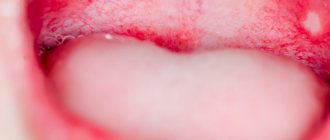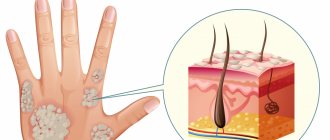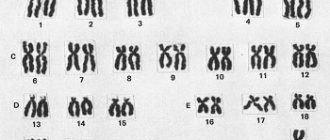Constipation in children
Constipation is a common problem in children (up to 53%)1, impairing quality of life2. Symptoms of constipation include: a decrease in the frequency of the child going to the toilet less than 3 times a week; hard, scanty stool; a feeling of incomplete emptying of the intestines and the need for additional efforts (prolonged, sometimes unsuccessful straining) 3. Constipation can also contribute to the occurrence of pain, inflammation of the intestines, changes in its microflora and decreased immunity3.
Causes of constipation in children and solutions
The causes of constipation in children vary depending on age. In children under one year of age, the causes of constipation may include poor nutrition of the mother during breastfeeding, switching to artificial feeding, introduction of complementary foods, rapid transition from one formula to another (in less than 3 days), etc. In older children, stress may be considered as a cause. , dietary changes, travel and other factors3. You can learn more about the causes of constipation in children at different ages in the articles “Constipation in children under one year of age” and “Constipation in children over one year of age.”
There are many types of laxatives to combat constipation in children with different mechanisms of action. However, we would like to focus on the use of microenemas, since the frequency of their use is growing every year4. Let's figure out what the frequent use of microenemas can cause for constipation in children.
Colic and other “tummy problems” in babies
Izyakov Dmitry Nikolaevich
Pediatrician
April 25, 2021
Colic
This term hides two problems associated with pain and discomfort in the abdomen in children. There are two concepts in domestic and Western medicine, and two names: intestinal and infant colic.
Domestic medicine understands intestinal colic episodes of abdominal pain associated with:
- with spasm of the intestinal muscles
- and/or with gas overflow (flatulence)
- and/or difficulty promoting content.
Western medicine understands infant colic episodes of crying.
- starting at 3 weeks of age
- occurring at least 3 times a week
- lasting at least 3 hours a day (rule of three triples)
- arising for no apparent reason
- usually at the same hours
- ending just as spontaneously with a sharp return of the child to his usual mood.
The cause of infant colic has not yet been reliably established, but there is increasing evidence that this is a variant of migraine, only it is not the head that hurts, but the nerve plexuses in the abdominal cavity. Hence, there are two fundamentally different approaches to treatment.
The first is the impact on the child . The second is the impact on the child’s mother .
During the first approach, the doctor may recommend and/or prescribe:
For prevention:
- a nursing mother's diet
- replacing formula for a formula-fed baby
- correction of frequency and volume of food
- individual prescription of complementary foods
- additional water addition
- additional placement on the stomach
- belly massage
- gymnastics for abdominal muscles
- medications to prevent spasms, flatulence and difficulty moving contents
To treat seizures:
- to relieve spasms: heat on the stomach, abdominal massage, a short period of hunger when the child is given only water, on the contrary - frequent breastfeeding, medicine (antispasmodic)
- to eliminate flatulence: gas tube, medicine (carminative or defoamer)
- to speed up the passage of contents: pressing the legs to the stomach, enema, medicine (laxative or prokinetic)
During the second trip, the doctor may recommend and/or prescribe:
- alternate presence of different family members with a crying child
- change of environment during an attack
- more frequent feeding
- simple psychotherapy methods for mom
- medications for mom: anxiolytics or sedatives
- pain reliever for a child based on paracetamol (up to 3 months) or ibuprofen (from 3 months).
I would especially like to emphasize that we are talking about abdominal pain that is not dangerous to the life and health of the child. Any attack of abdominal pain, the cause of which the parent does not understand, requires seeing a doctor! If an attack of abdominal pain is accompanied by one or more of the following symptoms:
- complete abstinence from food and drink
- vomiting
- temperature rise above 37.5°C
- any skin rash
- loss of consciousness
- increasing lethargy
- then an emergency call must be made immediately!
Intestinal dysbiosis
This term exists only in domestic medicine, and it refers to a quantitative and qualitative change in the composition of the intestinal microflora, detected by stool culture. This is NOT a disease, since it does not have any significant symptoms, except for harmless and medically insignificant changes in the color, consistency, and smell of stool. And therefore does not require treatment with drugs.
For correction, numerous dietary supplements are used, which should be discussed with your doctor. Dysbacteriosis is a consequence of any disease, so efforts to eliminate it should not replace the search for and treatment of the primary disease. In a doctor’s diagnosis, this term cannot be used independently, but only as a consequence or complication of the underlying disease.
Changes in baby's stool
Color. For a doctor, only three options are significant:
- colorless (i.e. white) – a sign of liver and/or biliary tract disease
- black – a sign of bleeding above or at the level of the stomach
- red (namely scarlet or crimson) is a sign of bleeding from the intestines or obstruction.
No other colors are medically important. But, as practice shows, color is very important to many parents, which is a reason for unreasonable visits to the doctor.
Smell. The putrid smell has a certain significance. All the rest - nothing, but again they can bother parents, and they can bother doctors.
Consistency. Hard and dense, making it difficult to empty – a sign of constipation. Watery and very runny is a sign of diarrhea. All other options should not be a reason to seek medical help.
Frequency. What matters is only an increase in frequency relative to normal with a simultaneous increase in the amount of feces per day = diarrhea. When breastfeeding, stool retention of any duration without difficulty defecating is not constipation. A baby who is exclusively breastfed can have bowel movements no more often, but sometimes the same as the frequency of feedings, as well as empty his bowels WITHOUT difficulty once every 7-10 days.
Impurities. The following impurities in stool are important: streaks of blood, drops of scarlet blood, mucus. All other impurities have no medical significance.
Constipation
This term refers to the difficulty of bowel movements, both with and without a change in stool frequency. The causes of constipation are varied and identifying them is the task of the doctor. To help the doctor find out the reasons, parents should know: what stool looks like after a bowel movement, it is important whether it is thick, or vice versa, liquid and
when the child begins to urge for the next bowel movement.
To help with constipation, the home medicine cabinet should have: 1) a gas outlet tube with a restrictor 2) glycerin suppositories for children 3) therapeutic microenemas "Microlax" They are used in this sequence when a child has a urge, but there is no bowel movement during the day/night (12 hours).
First, install the tube. If there is no effect after 30 minutes, then light a candle. If there is no effect for 2 hours, then give a microenema. Laxatives for oral administration and enemas should not be used without a doctor's prescription.
Diarrhea (diarrhea)
This term refers to an increase in stool frequency and/or stool volume over a 24-hour period. Absolutely any diarrhea is grounds for consulting a doctor, even if the parent seems to know the cause and has experience in dealing with it. Remember that behind any diarrhea there may be an intestinal infection that is life-threatening for the child!
However, there are two remedies that parents can use for primary care:
- rehydration agent = desoldering by age - “Humana electrolyte 0-12” diluted according to instructions. Give 10-20 ml to each chair for a child up to one year old.
- enterosorbent based on smectite - “Smecta” or “Neosmectin” For every 12 hours of diarrhea, use 1 powder diluted in 50-100 ml of water, which the child should drink between feedings, 10-20 ml per hour.
No other means should be used WITHOUT a doctor’s prescription and tests.
Disadvantages of microenemas
The effect of microenemas is limited to the rectum. The product softens only its contents and does not affect most of the large intestine, where stool formation occurs. Therefore, the problem may recur, which, in turn, may provoke drug abuse5.
If a child suffering from constipation quickly clears the intestines after using microenemas, mothers are happy and make regular use of such products a habit. Unfortunately, the very fact of going to the toilet does not mean that bowel function has returned to normal. This only means that the hard contents of the rectum have softened and come out, but the problem may remain. Recurrence of symptoms again prompts the use of laxatives. As a result, parents may develop the habit of frequent use of microenemas, and the child may forget how to go to the toilet independently.
Thus, microenemas are an “emergency” remedy for constipation in children, since their use can stimulate bowel movements. However, the use of microenemas does not allow the formation of natural regular stool, which is one of the main objectives of treating constipation. Therefore, microenemas may not be suitable for frequent and long-term use6.
Preparing for examination by a proctologist
If you are concerned about severe pain in the anus, no preparation for examination is required. In other cases, attending an appointment is possible only after preparing the rectum for examination. There are several options:
Using enemas
An important condition for the examination is thorough cleansing of the colon from contents. On the eve of the examination, the patient is prescribed a low-slag diet during the day, and only tea in the evening. The study is carried out on an empty stomach.
To prepare the intestine for examination, it is cleaned using enemas (1.5-2 liters of plain water at body temperature). It is advisable to do the first enema the evening before the examination; approximately 3-4 hours before the examination, 2 more enemas are given with a 45-minute break. An Esmarch mug is used to perform a cleansing enema. It can be bought at almost any pharmacy. Esmarch's mug is a container (glass, enamel or rubber) with a capacity of 1.5-2 liters. At the bottom of the mug there is a nipple onto which a thick-walled rubber tube is placed. For a rubber reservoir, the tube is its direct continuation. The length of the tube is about 1.5 m, the diameter is 1 cm. The tube ends with a removable tip (glass, plastic) 8-10 cm long. The tip must be intact, with smooth edges. It is preferable to use plastic tips, since a glass tip with a chipped edge can seriously injure the intestine. After use, the tip is washed well with soap under running warm water and boiled. Next to the tip on the tube there is a tap that regulates the flow of fluid into the intestines. If there is no tap, it can be replaced with a clothespin, clamp, etc.
For enemas, use only water from a proven source (one that is safe to drink). For children, it is better to use only boiled water. The water temperature is about 37-38 degrees. Colder water significantly increases intestinal motility and causes unpleasant pain. Using water with a temperature of more than 40 degrees for an enema is dangerous to health.
One way to perform an enema is as follows. Lie on the bed close to the edge on your left side with your legs bent and pulled towards your stomach. Place an oilcloth (plastic film) under your buttocks, and lower the free edge of it into a bucket in case you cannot hold water. Pour 1-1.5 liters of water at room temperature into Esmarch's mug, lift it up to a height of 1-1.5 m and lower the tip down to release a small amount of water and along with it air from the tube. Fill the tube (drain some liquid from the tube), then, without lowering the mug, close the valve on the rubber tube. Check if the tip is broken, lubricate it with Vaseline (soap, vegetable oil) and, spreading the buttocks, insert the tip into the anus with light rotational movements. The first 3-4 cm, insert the tip towards the navel, then another 5-8 cm - parallel to the tailbone. If there are obstacles and the tube rests against the intestinal wall or hard feces, remove it 1-2 cm and open the tap. Pressurized water will enter the large intestine. Almost immediately there will be a feeling of “fullness” in the intestines and an urge to stool. At these moments, you need to reduce the flow rate of liquid from the mug by closing the tap on the tube or squeezing it. Gentle circular stroking of the abdomen will help reduce discomfort.
If the tip is clogged with feces, it should be removed, cleaned and reinserted. If your rectum is filled with stool, try flushing it out with a stream of water. Esmarch's mug does not need to be completely emptied. Leaving a little water at the bottom to prevent air from entering the intestines, close the valve that regulates the flow of liquid and remove the tip. Place a pre-prepared pad (cloth, repeatedly folded toilet paper, etc.) on the perineum, which must be pressed between the legs.
Using microenemas MICROLAX
MICROLAX - available in the form of microenemas with a ready-made preparation of 5 ml. The laxative effect occurs after about 5 minutes.
Advantages of the drug
MICROLAX is a remedy for constipation in adults and children with a high safety profile, presented in the form of a disposable microenema. Its main advantages are hygiene and ease of use.
Hygiene. The microenema contains the required dose of a laxative, which is administered once. Unlike a regular enema, MICROLAX microenemas for constipation do not require preliminary antiseptic treatment and are completely ready for use.
Time of action. Microenema MICROLAX can begin to act within 5–15 minutes: the laxative softens dense stool, facilitating their elimination and promoting gentle bowel movements.
Security profile. Being a topical laxative, MICROLAX acts directly on dense feces accumulated in the rectum and does not affect the organs of the digestive system located above. The laxative is suitable for children from the first days of life. It is also allowed to use microenemas during pregnancy (in all trimesters) and during breastfeeding.
Convenience. When using this remedy for constipation, there is no need to select an individual dosage: the tube contains the optimal amount of the drug to provide a laxative effect (5 ml). A microclyster is a container with a flexible applicator tip, the edges of which are rounded. This allows the laxative to be administered safely.
All special diagnostic tests are carried out only after consulting a doctor.










